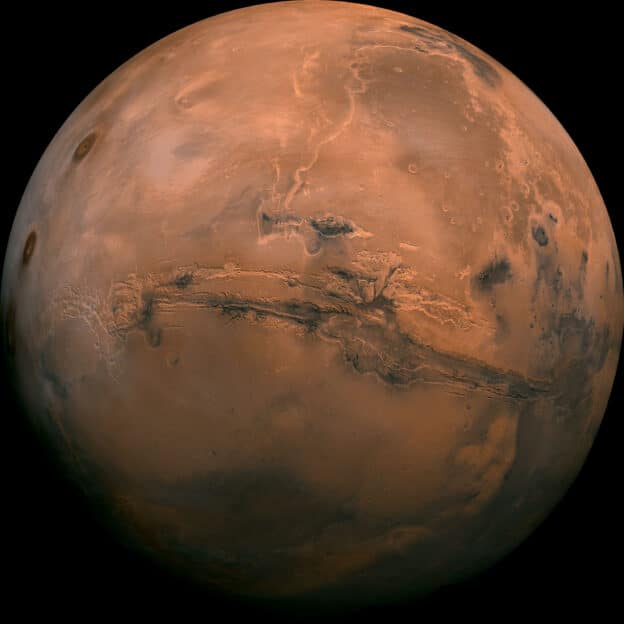
Overview
As the fourth planet from the Sun, Mars is our terrestrial neighbor. Though this cold and dusty world has many differences compared to Earth, it also has many similarities. It has seasons, dry river beds, polar ice caps and volcanoes. The length of a day on Mars is only 40 minutes longer than on Earth, and though It is half the size of our home world, it has roughly the same land area because there is no liquid water on the surface. The Red Planet, as it is sometimes called, is one of the most explored bodies in our solar system. Multiple space agencies have undertaken missions to Mars using landers, rovers, orbiters and a wide variety of instruments. The international effort to understand this fascinating world continues to grow, as we prepare to send the first human crews. With mounting evidence that it once had a wet, warm climate, Mars is suspected to have hosted life in the past.
Formation
The Red Planet took form roughly 4.5 billion years ago through a process known as accretion. Particles of gas and dust orbiting our sun were slowly pulled together by the force of gravity to form the single mass we now call Mars. It is classified as a terrestrial planet as a result of the fact that it is made primarily of rock and metal, with a core of iron, nickel and sulfur. The mantle and crust covering this core are composed of rock, iron, magnesium, aluminum, calcium and potassium.
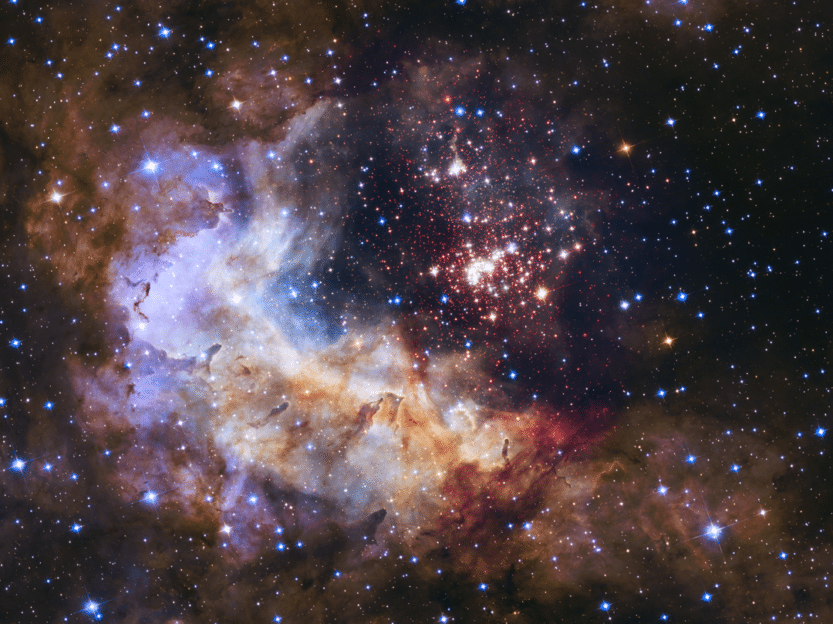
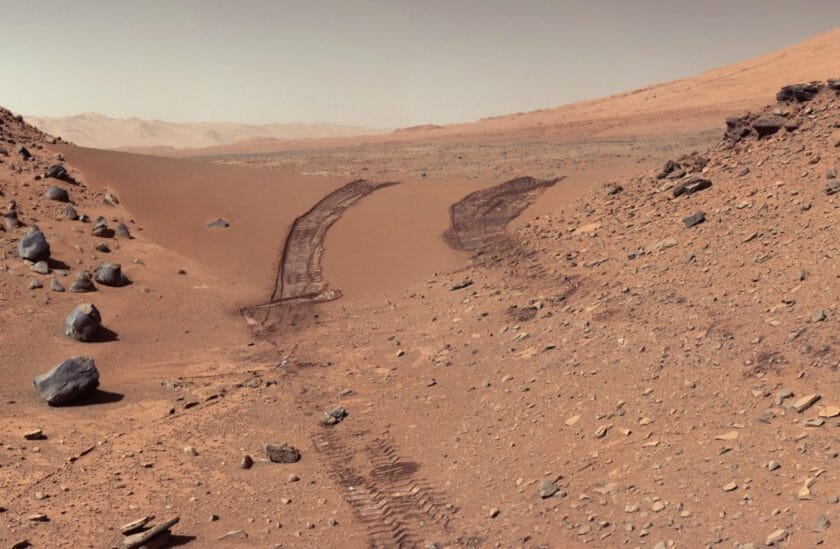
Mars Surface & Geology
The surface of Mars is rugged, having been shaped over billions of years through a combination of asteroid impacts, wind, volcanoes and chemical reactions. The reddish hue that gives the Red Planet its nickname comes from the rusting (oxidization) of iron, which is distributed in Martian rocks, regolith, and dust. The regolith is similar in many ways to soil on Earth in that it contains many of the same minerals like magnesium, potassium, and sodium. However, it also contains perchlorate at levels that are toxic to humans. This fact has led to interesting inventions to remove perchlorate from Martian regolith for the growing of food since the soil is otherwise similar in many ways. The ancient, battered landscape of Mars features some of our solar system’s most striking geological features. The volcano Olympus Mons towers at 13.6 miles in height, more than two and a half times taller than Mount Everest. It is so wide that from the perspective of an astronaut at the summit, it would appear to stretch to the horizon. The Martian canyon of Valles Marineris is so large (2,500 miles long, 4 miles deep) that some mountain ranges on Earth could be hidden inside it.
Atmosphere
The atmosphere on Mars is made mostly of carbon dioxide, nitrogen and argon gas. It is very thin, at roughly 1% the density of our atmosphere on Earth, because it has been blowing away in solar winds for millennia due to the lack of a planetary magnetic field. The thinness of the Martian atmosphere provides little protection against radiation or asteroid impact on the surface, but it offers a significant reservoir of valuable gas for the production of oxygen and fuel. The temperature on Mars varies between 70 and negative 225 degrees Fahrenheit, though this variability is much less in specific regions such as the equator. The winds on Mars can blow up to 60 miles per hour, however, since the atmosphere is so sparse, this would only feel like a light breeze here on Earth.
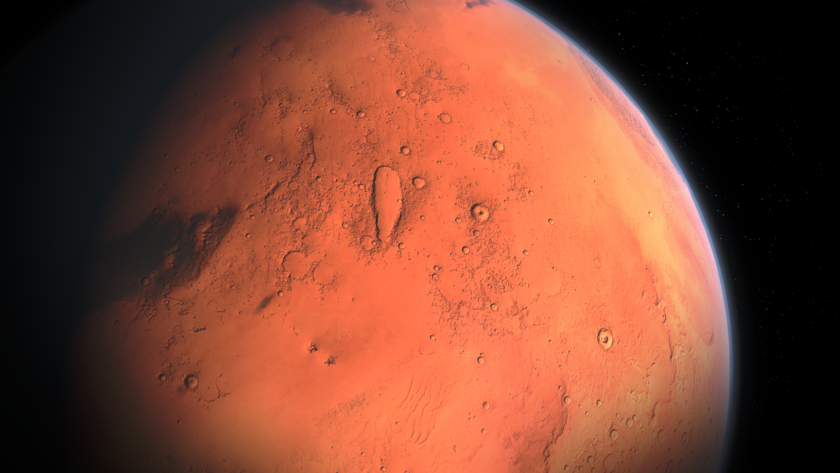
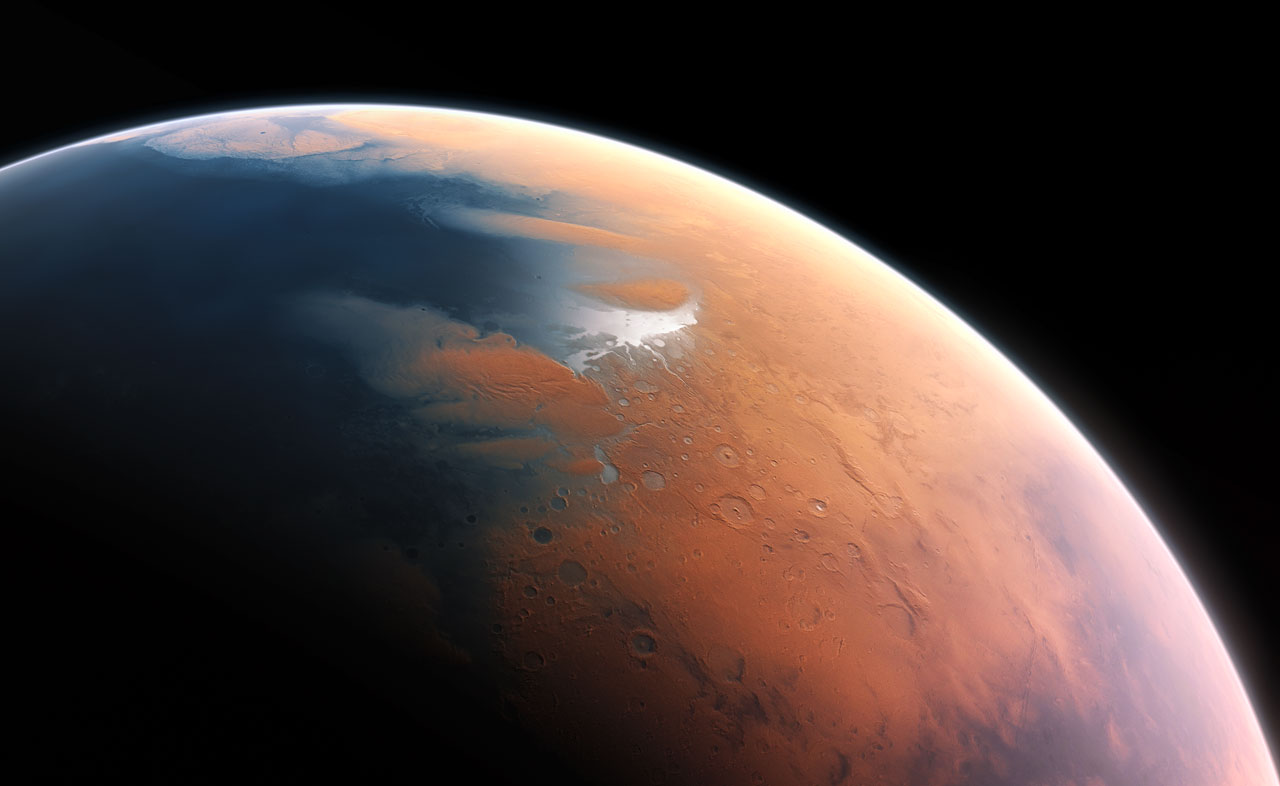
Water on Mars
Mars has enormous volumes of water trapped in the form of ice. It is estimated that the entire surface would be covered in a layer of water 35 meters deep, if that ice were melted. It is also suspected that additional water exists below the surface in the form of a highly saline (salty) brine, and that perhaps a large quantity is trapped in minerals within the planet’s crust. It is thought that this water was once in liquid form on the Martian surface. This theory is supported by substantial evidence, including the apparent presence of dried river beds. This vast amount of water may have harbored life in the past (and perhaps still today), and will be a valuable resource for human explorers on the Red Planet.
Life on Mars
The only place we have ever discovered life is here on Earth, for now. All living things on our home world require a source of energy (or food) and liquid water. Mars once had a warm and wet climate, and still has many essential nutrients for life such as potassium, magnesium and nitrogen. Not only is it possible that Mars once hosted life, but there is also a chance that organisms still exists beneath the surface. We continue to search for signs of Martian life, most recently with the NASA Perseverance rover. Discovering proof of past or present organic activity on Mars would have significant implications for the prevalence of life in our galaxy.
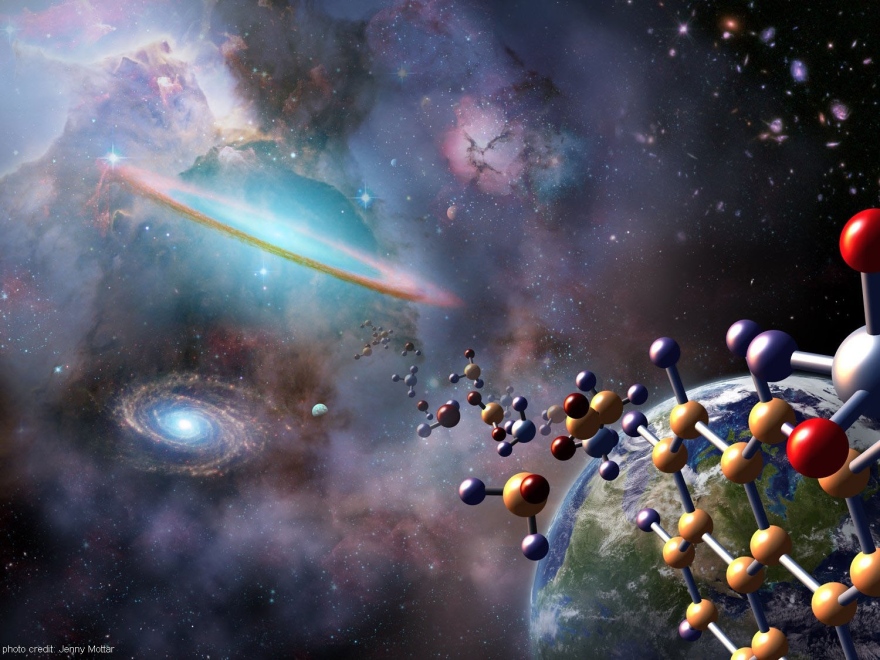
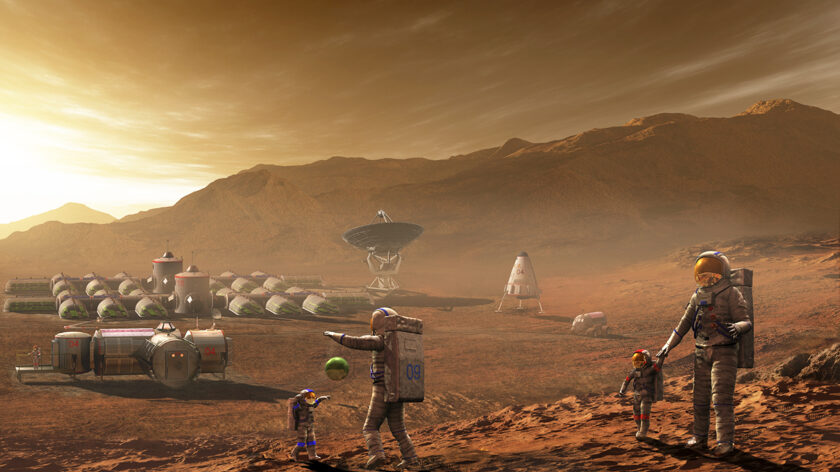
Mars Settlement
Why Mars? We’ve already established the “why” of Mars settlement: the science is there, the challenge is there, and the future is there. It’s important to also learn about all of the things humans would need to know and do to actually make human settlement on Mars possible. Many factors must be taken into account, including:
- How and when to best get to Mars via the understanding of orbital mechanics;
- How to breathe once we get there;
- How to make enough water since the Martian atmosphere is too thin to allow for the water ice on Mars to melt into liquid water;
- How to purify the regolith/”soil” of perchlorate, which is a salt that is toxic to humans and that stunts most plant growth;
- How to best grow food;
- How to build habitats that protect living things from radiation on Mars;
- How to build robust life support, transport, and shelter systems that withstand the elements;
- How to eventually terraform Mars so that it is a more habitable planet.
Many new research facilities are being established around the world to simulate the conditions on the surface of Mars, including the Mars Society’s Mars Desert Research Station (MDRS) in Utah and the Flashline Mars Arctic Research Station (FMARS) in Canada.
Learning more about and simulating Mars Settlement helps us right now, too, as there are many places on Earth that are harsh environments as well.
Mars Missions
The world has been captivated and filled with wonder at humanity’s potential on Mars ever since the robotic missions on The Red Planet launched. Since Mars Pathfinder, Robots have been regular visitors to Mars. The most iconic and well-known robots are the MER and MSL style Rovers. Recently, NASA began rethinking its strategy on rovers, with an eye toward sending smaller robots and machines faster rather than waiting the years and billions of dollars the massive rovers require. Ingenuity, the small but mighty Mars helicopter, ended up being so useful that scientists couldn’t help but take notice. They want to control costs and maximize function so that our missions to Mars will always be able to happen within available budgets. While larger machines will be especially needed when humans first set foot on The Red Planet, the goal of sending smaller machines to Mars first is sure to open up many more opportunities for organizations and inventors to develop systems for Mars Exploration! This means even YOU could invent a machine for Mars.
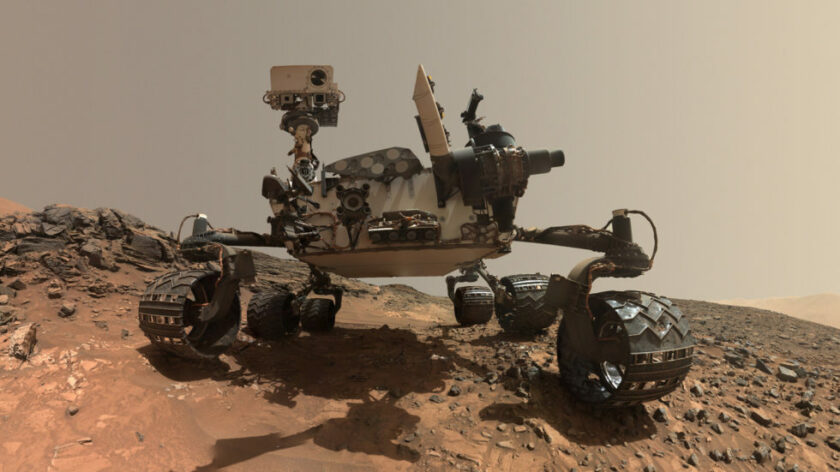
If you have any questions, feel free to contact us at education@marssociety.org.